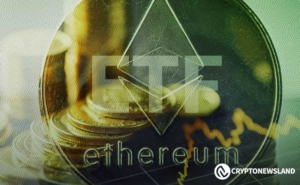Avalanche Octane Update Slashes Transaction Fees—AVAX Price Rally Incoming
- Avalanche has launched its much-anticipated update to reduce transaction fees on the C-Chain while boosting the performance of the network.
- A fee mechanism has been introduced to support the handling of blocks that “consume large amounts of gas”.
The Avalanche Octane update has officially gone live on the mainnet, as confirmed in our recent publication. According to the announcement made on X, this would introduce a fee mechanism on the C-Chain.

The Background Story
Avalanche’s current C-Chain has, since its introduction, operated with the modified version of the EIP-1559 dynamic fee mechanism, leaving it with a static gas target of 15,000,000 gas per 10-second rolling window. While this delivered as expected, it had a worrying drawback – a huge spike in gas prices. This left most users stranded with large blocks consuming their full gas limit. According to an official blog post , this resulted in fee predictability and inefficiencies.
To solve this problem, an Avalanche Community Proposal 176 (ACP-176) was introduced to integrate the fee mechanism into the C-Chain to ensure that blocks that consume large amounts of gas are adequately supported. Adding the fee mechanism also ensures that transaction fees on the C-Chain are significantly reduced. Meanwhile, this is not the only goal the upgrade seeks to achieve.
Earlier, it was extremely difficult to adapt to performance optimization due to how changing the C-chain’s static target gas consumption rate demanded a carefully orchestrated network upgrade. The Octane upgrade fixes this by introducing a dynamic gas target adjustment that is based on the Primary Network Validator.
An excerpt of the Avalanche report reads:
The upgrade empowers validators to dynamically adjust the target rate of gas consumption, ensuring the network can scale more effectively in response to varying loads and future growth. A validator that values high transactions per second (TPS) and lowers gas fees may vote to increase gas consumption over time by setting their preference higher than the historical target. The higher the target gas consumption, the more resources that can be used by the network.
Instruction to Node Operators
Before the mainnet launch, Avalanche released a post instructing Fuji node operators to upgrade to v1.13.0-fuji. Mainnet node operators were also asked to upgrade to v1.13.0 before the activation time was mandatory. However, validators were informed to run a few tests to see whether their machines could support the resources needed to facilitate this level of gas consumption.
The native token of Avalanche, AVAX, has reacted to this news, surging by 9% to trade at $17 in the last 24 hours.
According to our previous analysis , AVAX has the potential to hit $30 once the bull market returns. In the long run, Standard Chartered expects the asset to hit $250, as highlighted in our previous article. Until then, it could focus on moving within a tight range while trying to stay above a crucial support level.
Recommended for you:
- Avalanche (AVAX) Wallet Tutorial
- Check 24-hour Avalanche AVAX Price
- More Avalanche (AVAX) News
Disclaimer: The content of this article solely reflects the author's opinion and does not represent the platform in any capacity. This article is not intended to serve as a reference for making investment decisions.
You may also like
Ethereum ETFs See $5.98M Dip, But $2.27B Cumulative Inflow Signals Stability

AI16Z token launches Auto.fun this week

NVIDIA plans $500 billion AI factory buildout in US

Crypto funds lose $795 million amid tariff uncertainty

